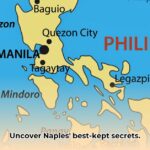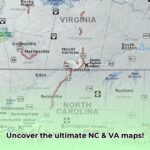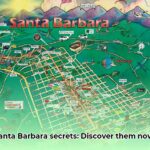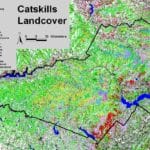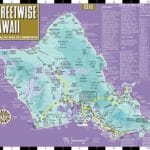Planning a trip to Santa Fe? Navigating its historic streets and discovering its hidden gems is a key part of the adventure. Finding the right map can transform your visit from a potential maze into a delightful exploration. This guide compares various Santa Fe navigation tools, including Google Maps, official city resources, specialized walking maps, and other digital solutions. Discover which map best suits your travel style and needs, ensuring you uncover the best of Santa Fe, whether you’re a first-time visitor or a seasoned explorer. We’ll equip you with insider tips to find the best spots and avoid tourist traps! For other city maps, check out this helpful resource: [Santa Barbara map](https://www.lolaapp.com/santa-barbara-map/).
Unveiling Santa Fe’s Charm: The Importance of City Maps
Santa Fe! The name itself evokes images of sun-baked adobe architecture, the captivating scent of burning piñon wood, and echoes of history resonating from every historic plaza. To fully appreciate this unique city, effective navigation is key. Choosing the right map can provide a deeper understanding and appreciation for this enchanting destination. Consider how easily accessible location data can significantly improve the tourist experience in Santa Fe.
A Spectrum of Maps for Every Explorer
Santa Fe’s mapping options are surprisingly diverse, offering multiple layers of information for city planners, researchers, and everyday tourists. Let’s explore the variety of available maps and how they cater to different needs.
First, the City of Santa Fe’s GIS data provides detailed, accurate information tailored for city planning and technical analysis. This resource offers precise specifications and utility locations. However, its complexity may be overwhelming for the casual tourist, providing an overload of technical information rather than practical guidance for enjoyment.
Then, there’s the Santa Fe Walking Map, a long-standing favorite among visitors. This portable, folded map guides travelers through the city’s streets, highlighting unique shops, iconic landmarks, and popular dining spots. Its traditional charm and user-friendly format have made it a reliable companion for decades. However, it may not always reflect recent changes in the city, such as new business openings or closures.
Lastly, digital maps like Google Maps offer real-time updates, GPS-enabled navigation, and integration with various services. They provide immediate access to directions and points of interest, making them invaluable for those unfamiliar with the city. These digital resources may overlook some of the hidden gems, such as smaller, local boutiques and restaurants, that contribute to Santa Fe’s unique charm.
Map Comparison: Weighing the Options
Here’s a closer look at the advantages and disadvantages of each map type in a convenient chart:
| Map Type | Advantages | Disadvantages |
|---|---|---|
| City of Santa Fe GIS Data | Highly detailed, accurate, and comprehensive data; ideal for city planning and research | Complex interface; not user-friendly for tourists; lacks curated recommendations |
| Santa Fe Walking Map | Portable, easy to use, highlights local businesses, and offers nostalgic appeal | Can be outdated; limited digital features; lacks real-time updates |
| Digital Maps (e.g., Google) | Real-time updates, turn-by-turn navigation, universally accessible, and integrates with services | May overlook lesser-known local businesses; varying accuracy; reduced emphasis on unique points of interest |
Each type of map has its benefits and limitations. City officials continue to explore the possibility of creating an ideal map experience. The Santa Fe Walking Map remains a popular choice, distributing approximately 200,000 copies each year.
The Vision: A United Santa Fe Map
Imagine a unified Santa Fe map, combining the strengths of various mapping resources into a single, user-friendly digital platform.
This enhanced system would improve navigation and the visitor experience. Interactive elements, such as clickable icons providing direct access to business websites or information on nearby museums, would enrich the user experience. Curated lists of local favorites, suggested walking routes, and augmented reality features providing historical context could further enhance exploration.
This seamless digital map would offer personalized recommendations based on user interests, highlighting art galleries for art enthusiasts and authentic New Mexican restaurants for food lovers, acting as a digital concierge, enhancing accessibility for tourists with route planning and information on accessible locations.
Creating a Community-Driven Map: A Collaborative Approach
Developing this enhanced map would require collaboration between the City of Santa Fe, local businesses, map creators, and visitors. A community-driven map would act as a dynamic, continuously updated resource enhanced by real-time feedback and events. Offering specific incentives would encourage participation from local businesses and community members in contributing to the development of a unified digital map.
An improved city map would support the local economy by encouraging business for local establishments, creating benefits for everyone.
Embark on Your Santa Fe Journey
Selecting the right map can significantly enhance your exploration of Santa Fe. Whether you prefer the comfort of a printed map or the convenience of digital technology, the journey itself remains the heart of the experience. The essence of discovery lies not only in the destination but also in the path you take to get there. Pack your belongings, choose your preferred map, and immerse yourself in the allure of Santa Fe. Your adventure awaits!
Leveraging Santa Fe City GIS Data for Tourism Planning
Key Takeaways:
- Santa Fe’s comprehensive data environment, which includes Geographic Information System (GIS) data, public datasets, and a distinct data platform, offers valuable information for effective tourism planning.
- Challenges related to data standardization and seamless integration impact comprehensive analysis.
- Effective tourism planning relies on accessible, user-friendly data visualization tools.
Santa Fe, a city rich in history and culture, offers a multitude of experiences for visitors. Utilizing Santa Fe’s Geographic Information System (GIS) data helps planners and travelers unlock the potential of this destination.
Exploring Santa Fe’s Digital Ecosystem
Consider Santa Fe as a detailed tapestry where each element represents a point of interest. GIS data is crucial to connecting these elements and uncovering the city’s patterns. Leveraging Santa Fe city GIS data for tourism planning involves accessing and analyzing information to highlight hidden attractions and craft memorable experiences. Employing innovative approaches to improve data standardization and comprehensive tourism analysis is essential.
Santa Fe’s data programs ensure available information. Government and county websites offer maps with street networks, elevations, population data, and points of interest. This data helps create travel experiences.
Harnessing GIS to Enhance Tourism
Consider these applications:
- Efficient Itinerary Planning: GIS helps plan routes, identifies distances between attractions, and determines the best times to minimize wait times.
- Finding Hidden Locations: Explore beyond tourist locations by finding lesser-known restaurants and scenic sites that may not be in guidebooks.
- Understanding Tourist Patterns: Use population density maps to find busy periods and recommend less-crowded alternatives.
GIS can help offer critical data on accessibility features, helping you plan trips with individual needs. Currently, consider how many Santa Fe businesses are using GIS data for tourism insights.
Challenges and Opportunities
Despite capabilities, Santa Fe’s GIS data has challenges. Sometimes, working together needs improvement for a unified system. Collaboration between sectors can create a more friendly system. This benefits businesses wanting to target marketing and tourists seeking fun experiences.
Santa Fe’s data ecosystem must rely on accessibility.
Using GIS Data Effectively
- Understand Your Needs: What information do you need, such as hiking trails, public routes, or restaurant locations?
- Identify Data Resources: Begin by looking at Santa Fe County and City websites.
- Explore Tools: Utilize free tools to translate information into maps. Data Visualization tools improve map accuracy by.

